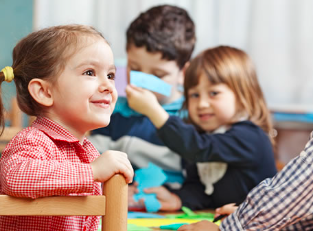In early childhood settings, routine transitions—such as moving from playtime to snack time or from circle time to outdoor activities—play a vital role in shaping a child’s sense of security and structure. While they may seem like small moments in the day, these transitions are powerful tools for fostering independence, emotional regulation, and positive behavior.
Why Routine Transitions Matter
Young children thrive on predictability. When they understand what comes next, they feel more confident and in control. Clear and consistent transitions help reduce anxiety and behavioral outbursts by providing children with a stable rhythm throughout their day.
For example, knowing that clean-up time comes after free play helps children mentally prepare to shift gears. Over time, this predictability builds trust and encourages cooperation.
Building Skills Through Transitions
Transitions are more than just moving from one activity to another—they are rich learning opportunities. During these moments, children practice listening, following directions, time awareness, and self-regulation. When educators use songs, visual cues, or gentle reminders during transitions, they support both the cognitive and emotional growth of their students.
Making Transitions Smooth and Supportive
To support children during transitions, it helps to:
-
Give advance notice: Let children know a few minutes before a change is coming.
-
Use signals: Try clapping patterns, songs, or visual timers to mark a transition.
-
Maintain consistency: Keep routines predictable, especially for young or sensitive learners.
-
Offer encouragement: Celebrate smooth transitions with positive feedback.
Supporting All Learners
Every child experiences transitions differently. Some may need more support, extra time, or comfort during changes. Being patient, observant, and responsive helps ensure all children feel supported during these key moments.
Conclusion
Routine transitions are more than logistical necessities—they are essential moments that help children develop life-long skills. By approaching them with care and consistency, educators and caregivers create a nurturing environment where children feel secure, respected, and ready to learn.


